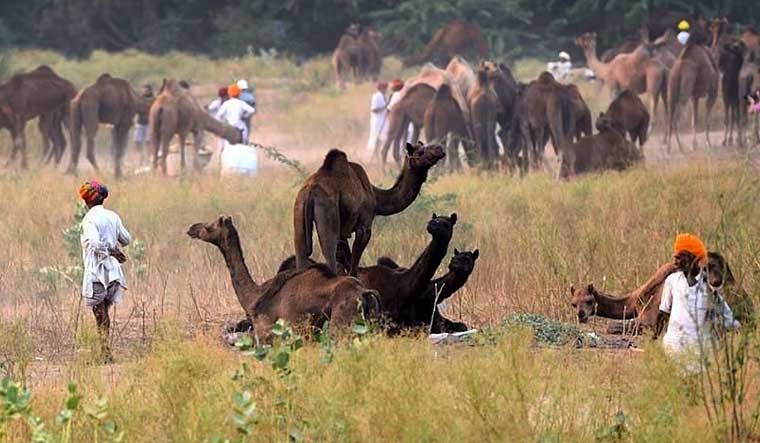More than a book of photographs, Wander.lens Rajasthan is a documentation of life in the state. Sudhir Kasliwal is an extremely skilled photographer, and it is clear from the wide range of photographs that fills this book – there is documentary, street, portraits, landscape, and abstract. He started photographing scenes from Rajasthan over 50 years ago. So, there are wide-angle shots of forts, fairs and palaces. Of colourful murals and busy tea stalls. Of camels framed against a khejri tree, of a community yajna in Pushkar, of people celebrating at a festival. These are not just visually stunning, but they also have a narrative brilliance to them. They are the photographer’s love story to his state.
But then you would expect nothing less from Kasliwal, who first took to photography during his school days at St Xavier’s in Jaipur. Since then, he has won several awards and laurels, including the World Photo Contest organised by the UNESCO and the National Photo Contest organised by the Indian ministry of information and broadcasting. His aerial photographs of Jaipur featured in a special brochure gifted to former American president, Bill Clinton. More recently, he was presented with the Maharaja Sawai Ram Singh II Award, for having “internalised Rajasthan through his lens”.
Kasliwal’s real triumph lies in his portraits. He has a knack to breathe life into them. The detail in some is so sharp that it lends them an acute realism. His people are not static, you can sense the movement even in their stillness – the leaves rustling, the pallu of a sari fluttering in the wind, glass bangles rubbing against each other…. For example, there is a picture of a woman pulling her ochre sari around her after a bath. As she splashes her way out of the river, each droplet is caught in mid-air, as though serenading her. Shown hugging herself, you can almost feel the shiver coursing through her.
There is also the joy of discovery in some photographs. Sometimes, the things that strike you the most are the things that take you by surprise. So, there is a photograph of a goods carrier bulging with people. But instead of chaos and clutter, what you find is fellowship and order – as though the villagers are enjoying being crammed together, as though space is an alien concept to them.
You feel like you know what Kasliwal meant when he said that his effort was “to capture things as they are”. Because there is something in us which recognises truth when we see it, and is hungry for more. So, you want to know why the smile of the beautiful girl in the canary yellow skirt is tinged with sadness. And why is the woman balancing the golden pot on her head looking so belligerent? And what is the story behind the young couple so caught up in each other as they wait for the camel cart to take them home?
Kasliwal has captured a wide spectrum of human emotions – diffidence, contemplation, confusion, laughter, playfulness, sorrow…. It is like the cosmos has disrobed for him, exposing the humanity cradled in its bosom, in all its bravery and all its vulnerability.



